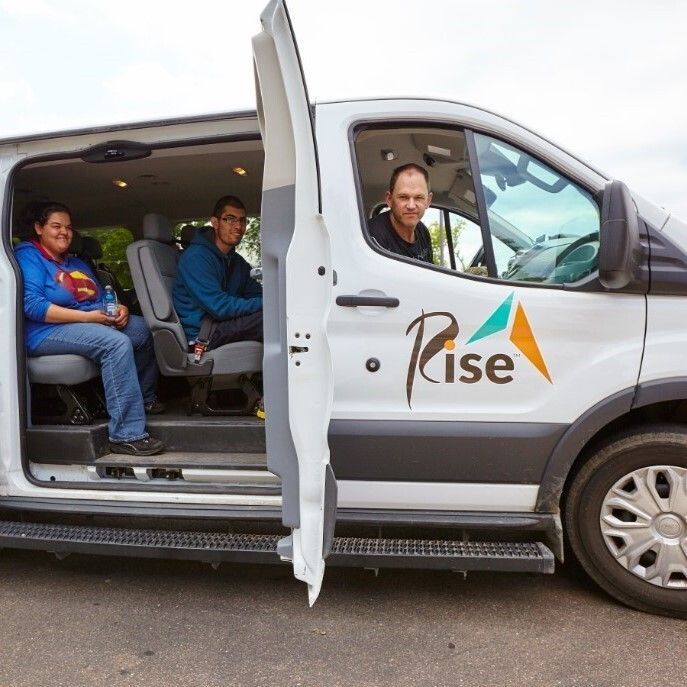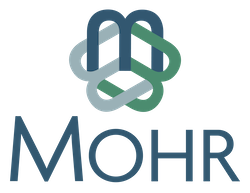
While getting people from point A to point B sounds like a relatively simple task, it is anything but for the people served by MOHR’s member organizations. Transportation is a key link for individual success, whether it’s to a job, a day program, or all of the above. For too many organizations, transportation has become an Achilles heel in their budget, where costs continue to rise and are often not transparent. The lead agencies (generally, but not limited to the individual counties served by our members) charged with setting reimbursement for Waiver transportation are working with outdated data. All of this results in our members not always getting the funding necessary to adequately serve their communities.
How did we get here?
In recent years, many changes have been implemented to the funding methodology and service descriptions for the services provided by our members. Long time MOHR members will recall their organizations used to receive a static daily rate, a portion of which was meant to cover bookend transportation costs. The daily rate was specific to each licensed site, with each site throughout the state having a different rate. Further, the reimbursement rate for each individual at a given site was identical, regardless of their unique support needs. The changes put services into several categories, reimbursed on a unit-based level. Waiver transportation became its own category. As a result, lead agencies are now tasked by the state with the job of setting a market rate to reimburse each organization.
Mike Greenbaum is Executive Director of transportation provider Newtrax, and co-chairs MOHR’s Transportation Committee along with PHASE-Industries CEO Tim Schmutzer. Greenbaum says this new funding process presented MOHR members with a big change that upended a long-standing practice that resulted in costs more or less reconciling between program and transportation rates.
“Transportation was really underfunded before, but it didn’t matter that much because there was enough margin in the rates to cushion that,” Greenbaum explained.
The cushion is now gone, as transportation is a separate service for which the reimbursement rate has to be justified on its own merits to arrive at a market rate.
The state did make an effort to determine what a market rate might be, hiring a third-party firm in 2018 to study waiver transportation. MOHR was invited to join in on the analysis of that study, which produced numerous concerns about methodology. The study’s recommendations have not been implemented.
This has left lead agencies with the burden of individually determining market rates, and MOHR members having to create compelling, detailed, and evidence-backed requests in order to achieve reimbursement on a level that will allow their programs to continue. Although there are only small variances in the cost of transportation from county to county, the market rate that lead agencies have set has varied greatly based on which lead agency is setting the rate. The hard part, of course, is getting all lead agencies to negotiate an equitable market rate. How hard depends on whether day services providers have the staff to adequately track costs so they can present the best case for adequate funding, and whether the lead agencies they work with have the depth of understanding necessary to arrive at a fair rate.
Julie Johnson, MSS President and CEO, and MOHR board member, says the fact Minnesota has 87 counties adds another layer of complexity for MOHR members, along with the fact some providers have to negotiate with more than one lead agency if members provide services in more than one county.
Gathering the data
The first step is for organizations to realize the cost of transportation extends well beyond the cost of a driver, vehicles, and fuel.
“We have to really work to articulate those costs so they (lead agencies) can understand what the true costs are,” said Johnson. She added that can be incredibly difficult for organizations that don’t have staffing available to do the analysis.
It’s not as easy as basing the ask on another organization’s market rate because programs can be very different, as are the needs of the people they serve. For example, Johnson’s costs for MSS skew higher as MSS serves a high percentage of people with more complex needs. If all the costs factored into providing transportation services for an individual with complex needs aren’t captured, the funding request could come up short.
Schmutzer says lead agencies often don’t consider the full costs associated with building and delivering a Waiver Transportation Program, which includes person-centered transportation coordination and supports. Schmutzer says that means in addition to the cost of operating a vehicle, or contracting services, organizations should also track the cost of resources you put into the people who coordinate and operate your program.
Beyond the basics of mileage and gas, real costs could include any of the following:
- Infrastructure costs – do you have vehicles you must store in a garage or parking lot that must be maintained, and have security, lighting, etc. for safety?
- Vehicle costs - insurance, upkeep and maintenance, fluctuating fuel prices, Mn-DOT compliance equipment, back-up vehicle/plan, etc.
- Administrative and scheduling costs – including basic trip scheduling and coordination, last-minute changes, back-up resources for vehicle breakdowns, emergencies or accidents – all specific to each individual.
- Support staff – do you have medically fragile people who need additional help getting on and off the bus? Do you have someone who might suffer from a seizure disorder who requires a higher level of support? Someone who is unable to sit next to another person, which affects the capacity of the vehicle? Plans developed and practiced around vehicle emergencies?
- Do you need wheelchair-accessible vehicles?
- Medication support?
Greenbaum has an additional concern with how lead agencies are setting rates.
He worries about a trend by some lead agencies of setting a flat rate for private or public transportation providers rather than setting tiered rates that account for complex versus less complex supports. Greenbaum fears that will lead some private transportation companies to accept only the riders who require less support, so profit margins are higher.
None of this data collection is easy, however, Johnson says it is critical not just for individual providers, but it also contributes to data collected for providers statewide. Johnson said the Department of Human Services asks providers to report their costs once every five years. If providers don’t have that data, it can skew statewide results, meaning DHS won’t have the right data to set rates in the future.
Getting to fairness
Helping determine a better way to set market rates has been the work of MOHR’s Transportation Committee on behalf of its members. In an effort to gather current data that would help all parties involved understand the true cost of in-program transportation, the committee launched a survey this summer and plan to unveil the results at this month’s Legislative Retreat. This information will be used to update resources the committee already makes available to MOHR members around bookend transportation to help them gather the data they need to present their case to the lead agencies representing their various counties.
The resources amount to a kit that includes a templated letter MOHR members can send lead agencies to make their request. Organizations can tailor the document to their specific needs to include their own data. The kit also contains a resource document that includes a timeline of how and why the process has changed, along with information on the current process. There are additional resources that will also help members shape and determine the proper framework for their story.
These resources will be made available at the Legislative Retreat, and eventually online where members will be able to access it. Schmutzer said any MOHR member is welcome to email him directly at tschmutzer@phase-industries.org to receive the resources.
Johnson says relationships are also a part of the equation when trying to build your case for a rate increase. “Really sitting down to develop that relationship with your county to explain what is happening,” Johnson said. “You have to keep the conversation going changing costs of providing transportation.”
That includes MOHR as an organization, which Johnson said is constantly engaging the state as well as individual legislators to help them better understand if organizations are to fulfill their function to provide services to all who need them, the state and the counties, or lead agencies representing those counties, need to step up with adequate funding for transportation.
“Transportation, at its core, is an essential element required for individuals to fully participate in society,” Schmutzer said. “We need healthy transportation systems to do so, and those systems can only exist and succeed with proper and accurate reimbursement rates. When a provider secures such a rate, it helps strengthen all providers in the state, and all individuals supported in Waiver Transportation.”
--
